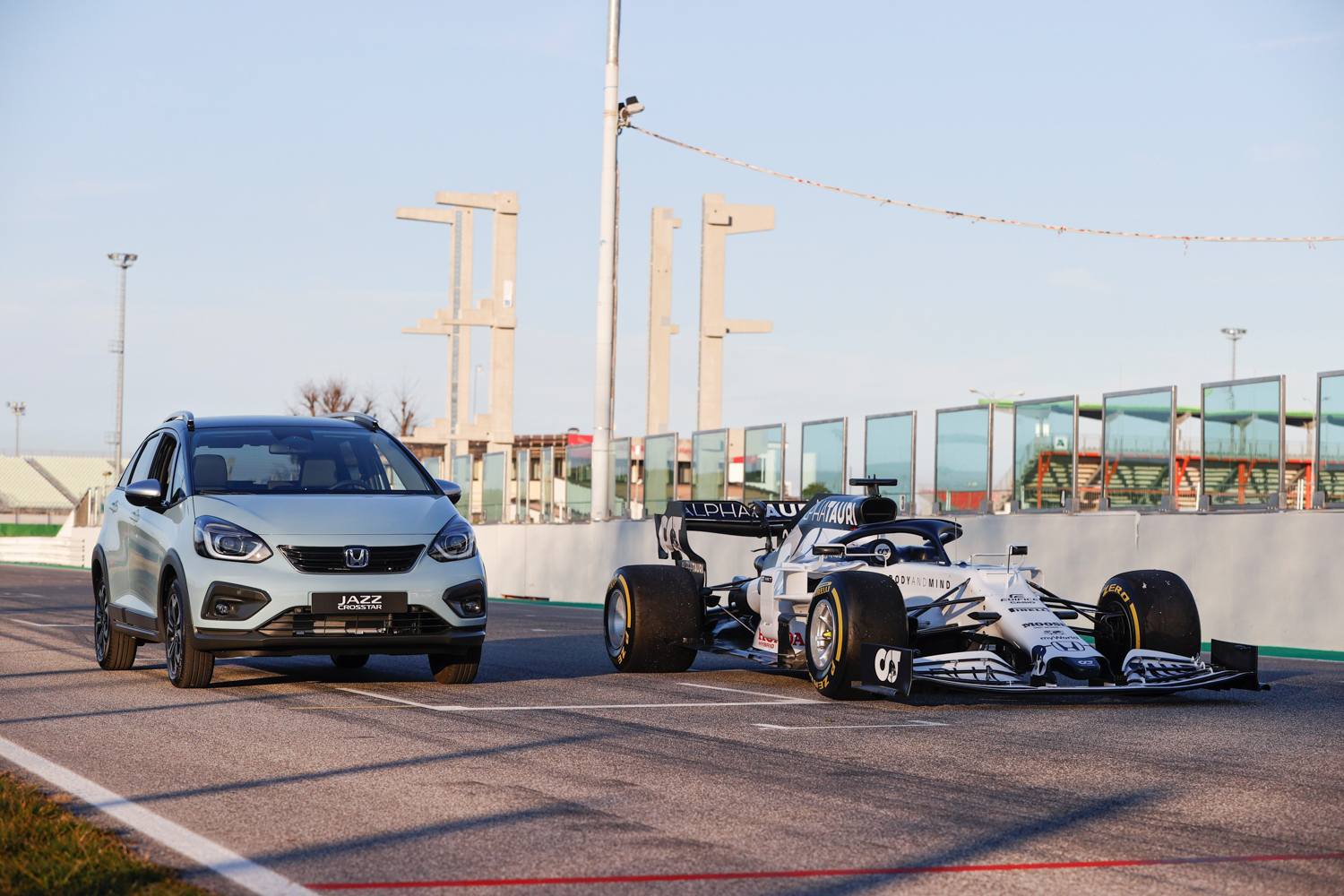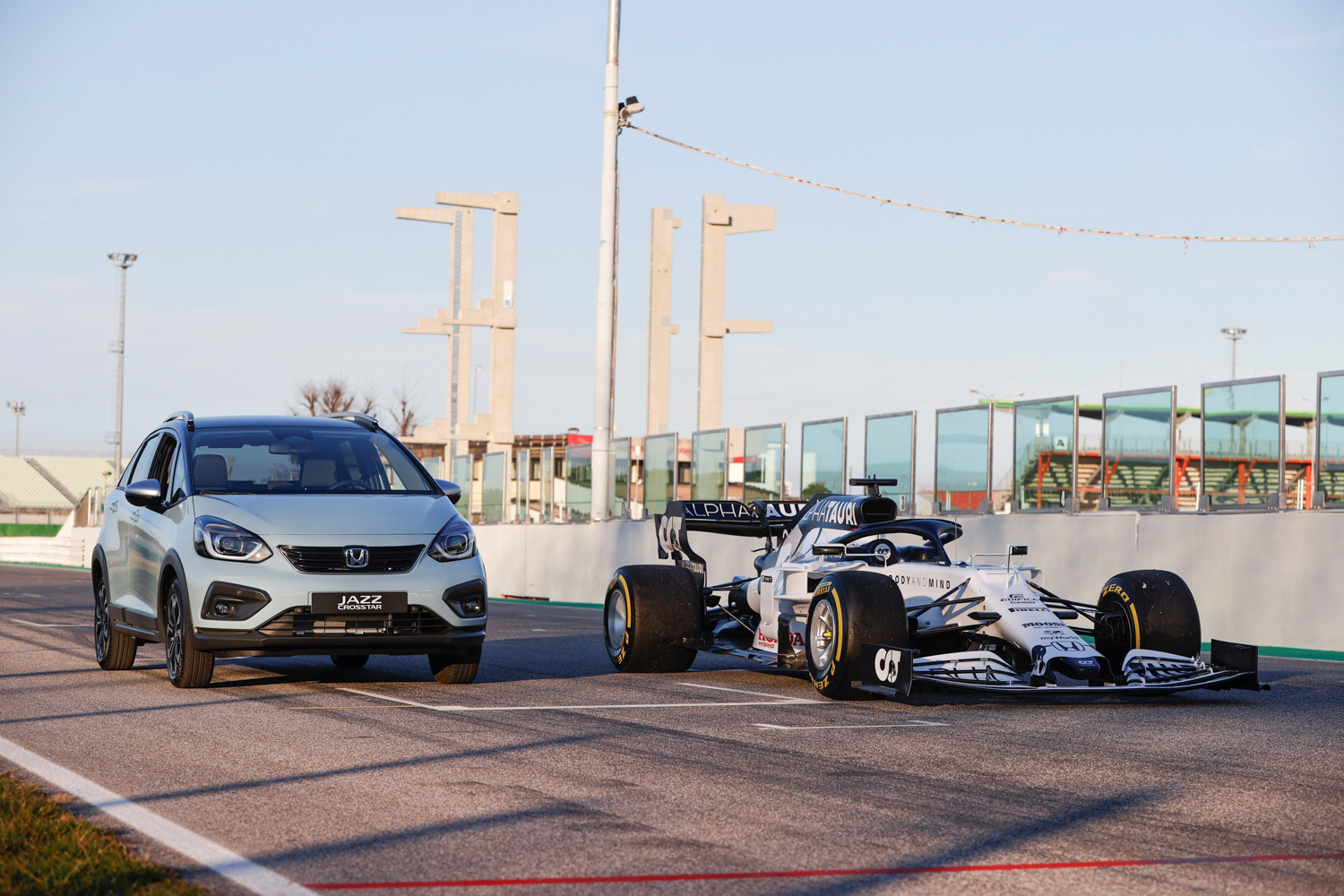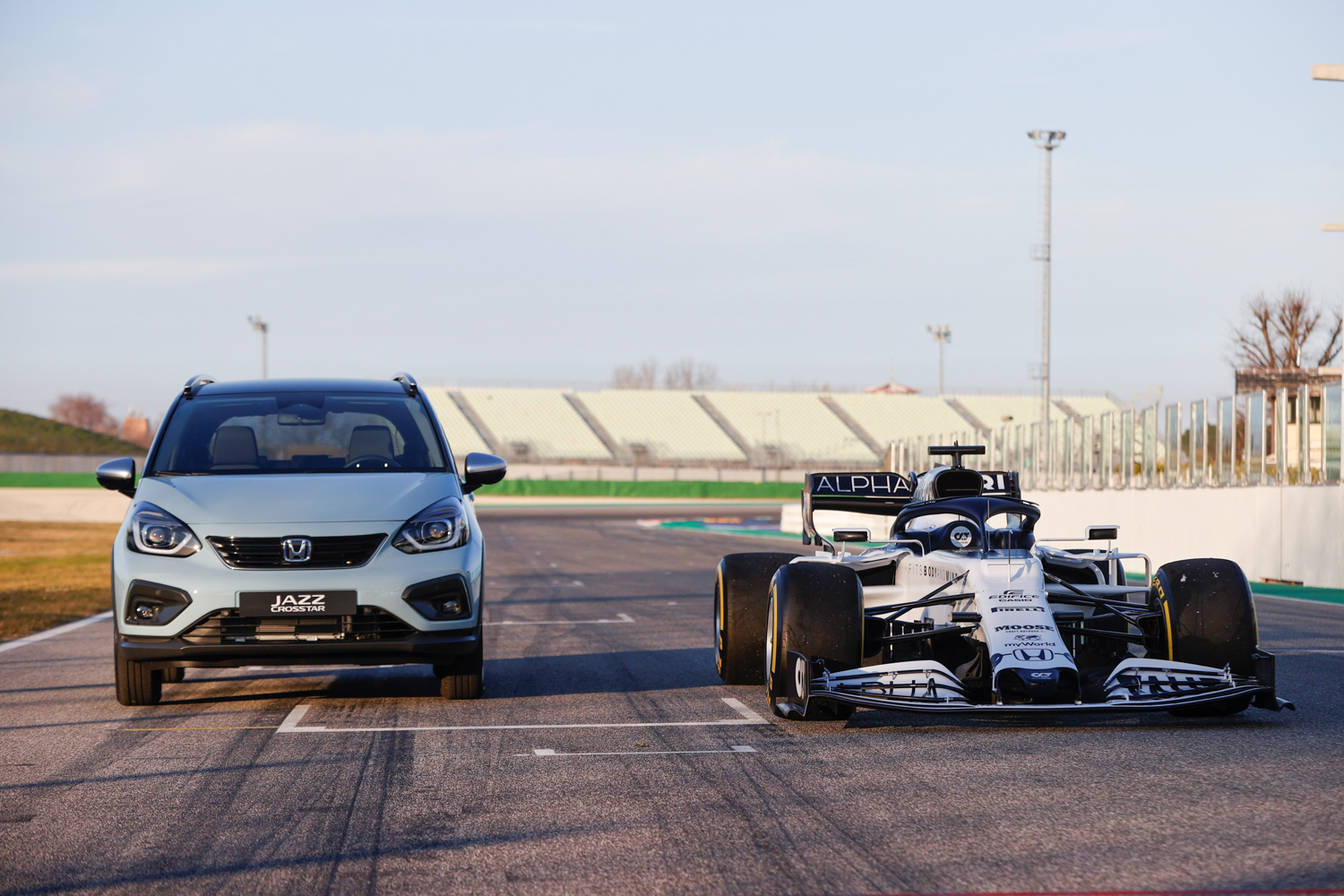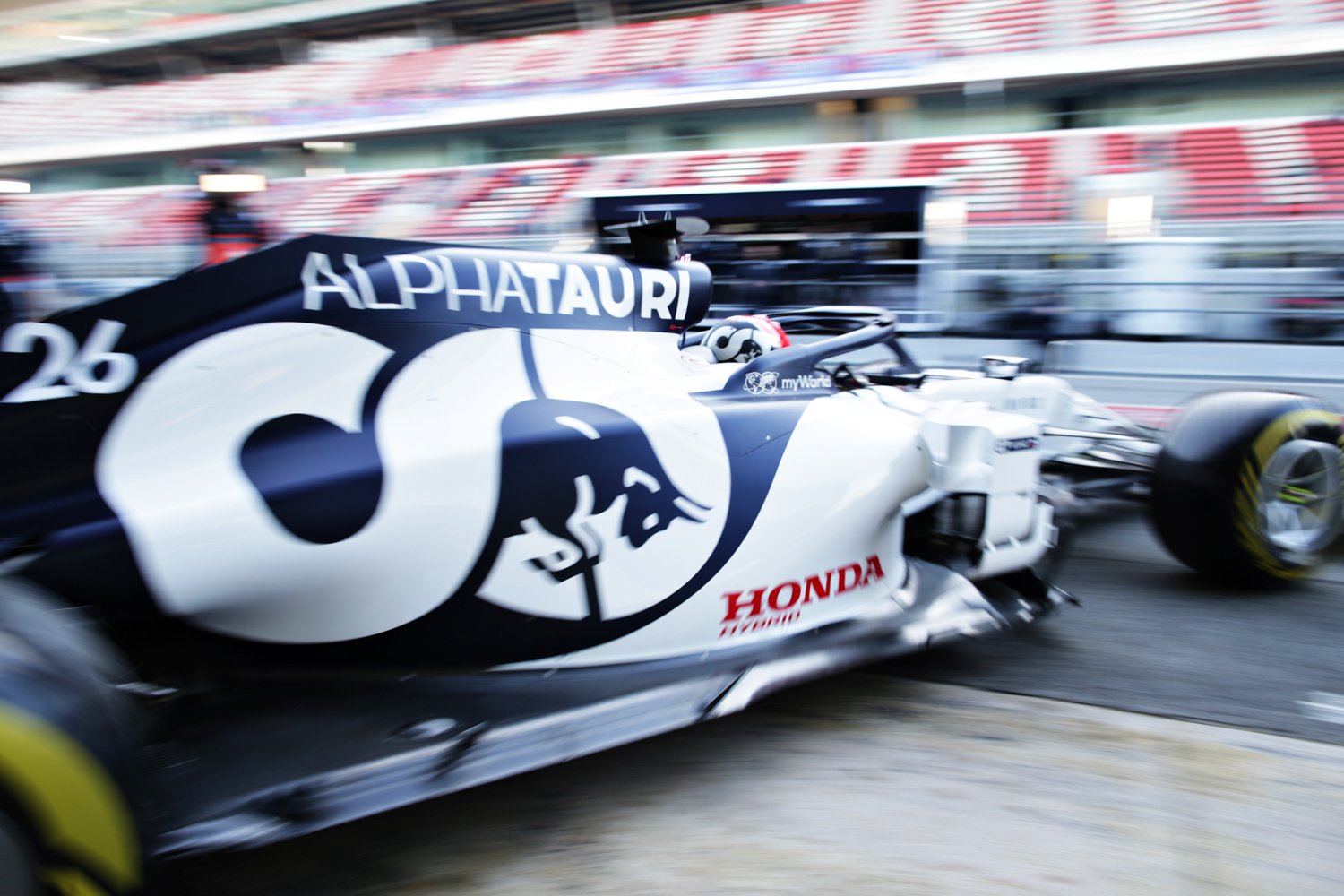You might not immediately think of Formula 1 when you look at the Honda Jazz but its parent company is claiming the incoming fourth-generation car will indeed take its hybrid technology from the race track.
From race to road
Honda claims the Jazz and Jazz Crosstar models' e:HEV hybrid system is related to the Hybrid Power Unit (HPU) found in the company's RA620H drivetrain, which uses a 1.6-litre six-cylinder turbocharged petrol engine and a (kinetic) Energy Recovery System (KERS). This RA620H, installed in the Aston Martin Red Bull Racing and Scuderia Toro Rosso (now Scuderia AlphaTauri) cars, helped to achieve three race wins and six podium finishes in the 2019 F1 season.
Obviously, the Jazz won't be running the RA620H or even a six-cylinder engine (more's the pity), but its e:HEV set-up will employ know-how that the Honda F1 engineers have gleaned by constantly assessing and changing the ratio of the energy recovered and deployed by the RA620H's hybrid system to deliver optimum performance, as the e:HEV similarly recycles energy and harnesses it to charge the battery - which in turn supports the Jazz's engine output for better performance, seamless switching between drive modes and maximum efficiency.
Three drive modes
Yasuaki Asaki, head of PU Development for Honda, said: "During a Formula 1 race weekend, teams have to manage very carefully how much fuel they use to comply with the sport's regulations. In a race we can divide the total fuel allowance over the number of laps, but there are going to be situations where a team might wish to use more fuel in order to get higher performance and in other parts of the race they will want to save fuel for later, while behind a safety car for example. In a race, the communication between the race engineer and the driver is key to achieving that best balance. However, in our road-going e:HEV hybrids we apply our expertise to ensure the powertrain control units deliver the best possible power to efficiency ratio for the driver, in any required driving mode."
The Jazz's e:HEV system uses two compact electric motors (one propulsion, one generator) connected to a 1.5-litre DOHC i-VTEC four-cylinder petrol engine, a lithium-ion battery and a fixed-gear transmission, called Electronically Controlled Continuously Variable Transmission (eCVT), via an intelligent power control unit. The driver is able to access three drive modes as a result, which are as follows: in EV Drive, the li-ion battery supplies power directly to the electric propulsion motor; in Hybrid Drive, the engine supplies power to the electric generator motor, which in turn supplies it to the electric propulsion motor; and in Engine Drive, the petrol engine is connected directly to the wheels via a lock-up clutch, meaning internal combustion powers forward momentum. This three-stage system is the same as seen on the i-MMD-equipped CR-V Hybrid crossover-SUV.
Honda's F1 heritage is enviable. The Japanese company began its motorsport efforts in 1958 and entered Formula 1 with the RA271 car in 1964. Just one year later the RA272 picked up Honda's first-ever race win in the top level of competitive racing and it has since gone on to win 74 Grands Prix and six Constructors' Championships in the interim.




